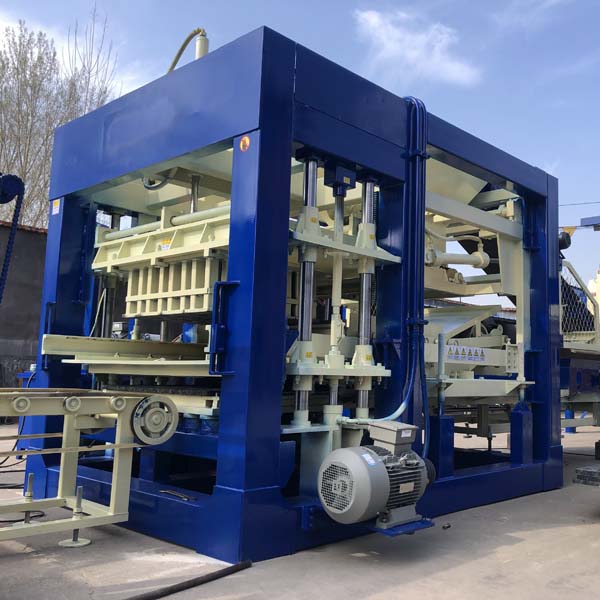
**Title: Adapting to Change: Market Dynamics of Full-Automatic Block Products in Post-Pandemic Construction**
**Introduction**
The construction industry, like many others, has experienced significant shifts due to the global pandemic. As the sector emerges from the challenges posed by COVID-19, the market dynamics of full-automatic block products are undergoing notable changes. This article explores the evolving landscape of the full-automatic block market in the post-pandemic era, considering factors such as increased focus on sustainability, digital transformation, and resilience in construction practices.
**1. Accelerated Adoption of Automation**
The disruptions caused by the pandemic have accelerated the adoption of automation in the construction industry, and full-automatic block products are at the forefront of this trend. Construction companies are increasingly turning to automated solutions to mitigate the impact of labor shortages and operational disruptions. Full-automatic block machines, with their capacity for minimal human intervention and high efficiency, are becoming integral to construction projects aiming for resilience and continuity.
**2. Focus on Sustainability and Green Building**
The pandemic has amplified awareness of the need for sustainable and resilient construction practices. Full-automatic block products, especially those incorporating recycled materials and energy-efficient designs, are gaining traction in the post-pandemic market. Builders and developers are placing a premium on green building solutions, aligning with the global emphasis on environmental responsibility. The sustainable features of full-automatic blocks are not only cost-effective but also contribute to meeting stringent environmental standards.
**3. Supply Chain Resilience**
The disruptions to global supply chains during the pandemic have prompted construction professionals to reassess and reinforce the resilience of their supply networks. Full-automatic block solutions, which often involve local manufacturing and reduced dependence on intricate supply chains, are positioned favorably in the post-pandemic market. This shift towards more resilient supply chains enhances the reliability and availability of full-automatic block products, contributing to increased adoption.
**4. Digital Transformation in Construction Practices**
The pandemic has acted as a catalyst for the digital transformation of the construction industry. Full-automatic block products are not just physical components; they are part of a broader ecosystem that includes digital technologies. Builders are embracing digital tools for project management, design optimization, and real-time monitoring. The integration of full-automatic block solutions into these digital workflows enhances efficiency, reduces errors, and facilitates better collaboration among stakeholders.
**5. Modular Construction and Prefabrication**
Post-pandemic construction projects are leaning towards modular construction and prefabrication as strategies to accelerate timelines and minimize on-site labor requirements. Full-automatic block machines, producing uniform and precisely engineered blocks, are well-suited for integration into modular construction processes. The efficiency and consistency offered by full-automatic block products align with the demand for faster construction methods, reducing project timelines and associated risks.
**6. Resilience in Building Design**
The pandemic has prompted a reevaluation of building design to accommodate changing requirements, such as the need for flexible spaces and enhanced ventilation. Full-automatic block products contribute to resilient building design by offering customizable solutions that align with evolving architectural needs. The flexibility in design and the consistent quality of full-automatic blocks make them adaptable to diverse construction projects in the post-pandemic era.
**7. Increased Emphasis on Worker Safety**
The pandemic has underscored the importance of prioritizing worker safety on construction sites. Full-automatic block machines, by minimizing the need for manual labor in certain processes, contribute to enhanced on-site safety. As construction companies prioritize the well-being of their workforce, the safety advantages offered by full-automatic block solutions become a compelling factor in their adoption.
**8. Market Adaptation and Flexibility**
The post-pandemic construction market is characterized by increased uncertainty and a need for adaptability. Full-automatic block manufacturers that demonstrate flexibility in responding to changing market demands and offer solutions that align with the evolving needs of construction projects are likely to thrive. This adaptability may involve customizations, innovative product offerings, and a responsiveness to emerging trends.
**Conclusion**
The post-pandemic construction landscape is marked by a recalibration of priorities and an increased focus on resilience, sustainability, and efficiency. Full-automatic block products, with their automation capabilities, sustainability features, and adaptability to changing construction practices, are well-positioned to play a crucial role in this transformed market. As the construction industry continues to navigate the challenges and opportunities presented by the post-pandemic era, full-automatic block solutions are poised to be key contributors to the sector’s growth and evolution.
